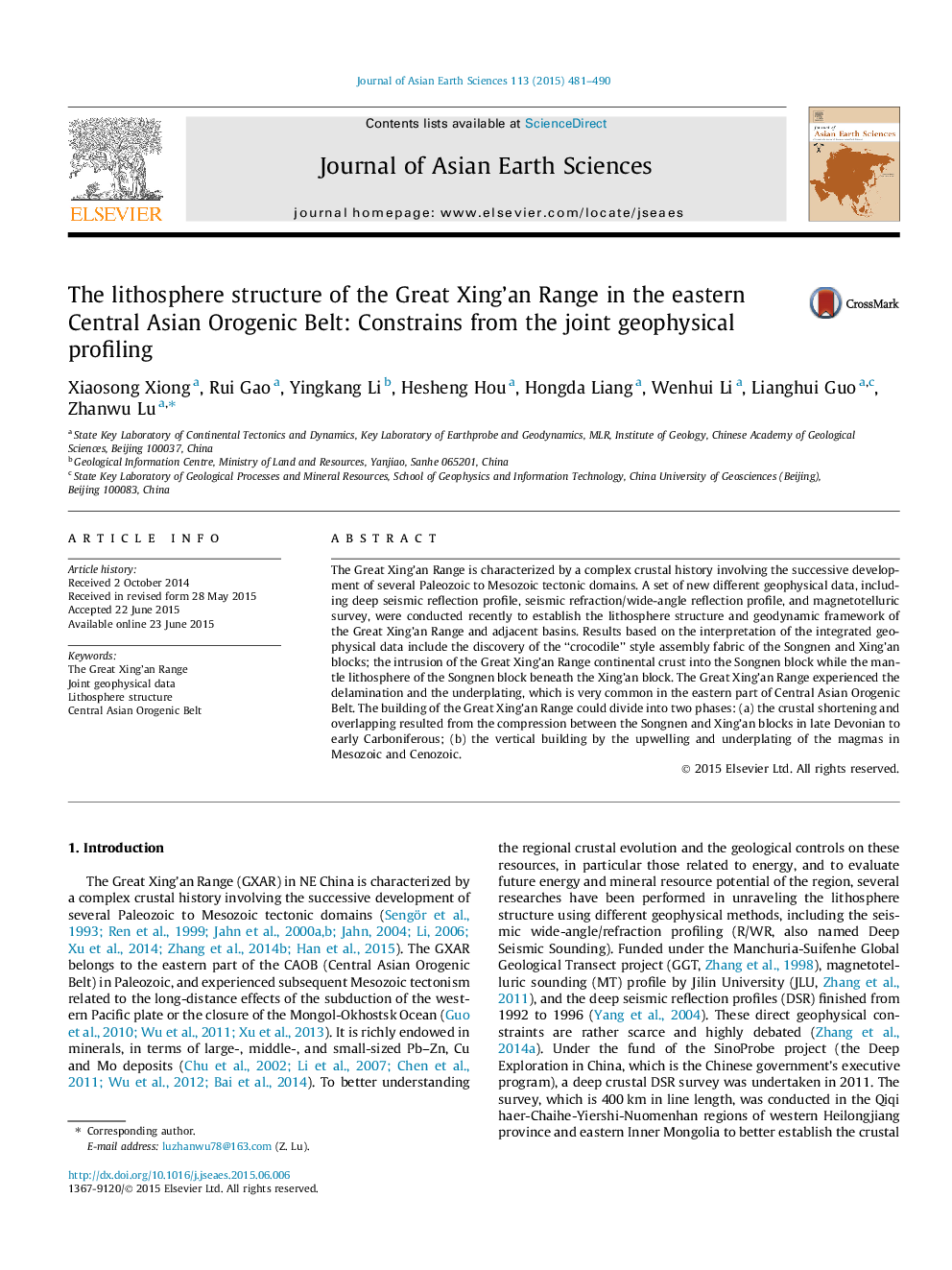| Article ID | Journal | Published Year | Pages | File Type |
|---|---|---|---|---|
| 4730241 | Journal of Asian Earth Sciences | 2015 | 10 Pages |
•We propose the assembly fabric of the Songnen and Xing’an blocks is “crocodile”.•We verified the GXAR experienced the delamination and the underplating, which is very common in the eastern part of the CAOB.•We propose the building of the GXAR could divide into two phases: a) the early crustal shortening and overlapping in later Paleozoic; b) the later vertical accreation in Mesozoic–Cenozoic subsequently.
The Great Xing’an Range is characterized by a complex crustal history involving the successive development of several Paleozoic to Mesozoic tectonic domains. A set of new different geophysical data, including deep seismic reflection profile, seismic refraction/wide-angle reflection profile, and magnetotelluric survey, were conducted recently to establish the lithosphere structure and geodynamic framework of the Great Xing’an Range and adjacent basins. Results based on the interpretation of the integrated geophysical data include the discovery of the “crocodile” style assembly fabric of the Songnen and Xing’an blocks; the intrusion of the Great Xing’an Range continental crust into the Songnen block while the mantle lithosphere of the Songnen block beneath the Xing’an block. The Great Xing’an Range experienced the delamination and the underplating, which is very common in the eastern part of Central Asian Orogenic Belt. The building of the Great Xing’an Range could divide into two phases: (a) the crustal shortening and overlapping resulted from the compression between the Songnen and Xing’an blocks in late Devonian to early Carboniferous; (b) the vertical building by the upwelling and underplating of the magmas in Mesozoic and Cenozoic.
